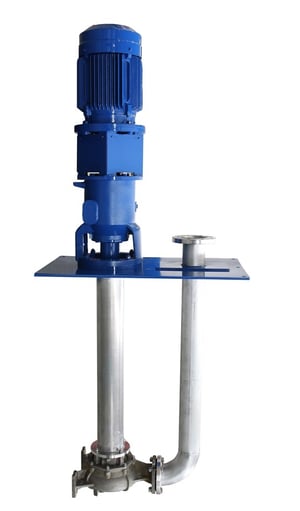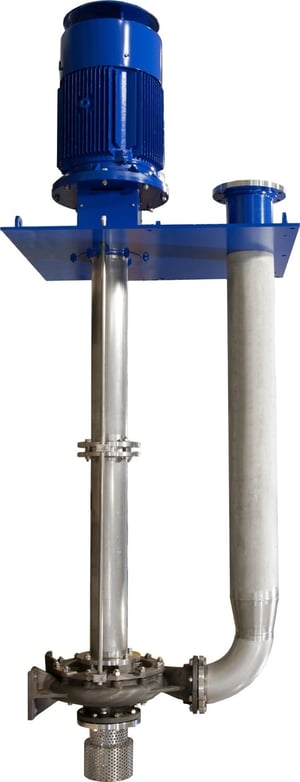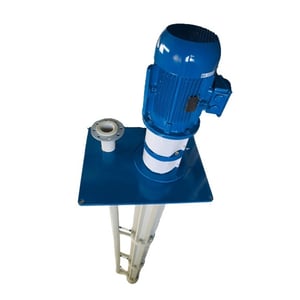
Acid Pump Ranges, Safety & ATEX Ratings
Explosive Environments
Explosive atmospheres can be caused by flammable gases, mists, vapors or by combustible dust.
If there is enough of the substance, mixed with air, then all it needs is a source of ignition to cause an explosion.
Explosions can cause serious injuries as well as significant damage and in some cases fatalities. Preventing the release of dangerous substances, which can create explosive atmospheres and preventing sources of ignition are two widely used ways of reducing the risk. Using the correct equipment can greatly help.
The Dangerous Substances and Explosive Atmospheres Regulations 2002 (DSEAR) place duties on employers to eliminate or control the risks from explosive atmospheres in the workplace. A summary of those requirements can be found here.
What is ATEX?
ATEX is the name commonly given to the two European Directives for controlling explosive atmospheres.
The first ATEX directive (94/9/EC) deals with the requirement pertaining to equipment used in areas where there is a serious risk of explosion. The manufacturer has to fulfill the requirements and mark the product with relevant approval.
The second ATEX directive (99/92/EC) deals with the minimum health and safety requirements that the user has to fulfill, when working within areas where there is a danger of explosion.
Crest Pumps Group and ATEX
Our Centrifugal Chemical Pumps have been built to ATEX standard, all pumps listed below fully meet the criteria of the European Directives;
Magnetic drive pumps
Mechanically Sealed Pumps
Vertical Pumps
Cast Iron Centrifugal Pumps
How can a explosive atmosphere be categorized?
An explosive atmosphere is an atmosphere that develops explosively because of changing surroundings or as a consequence of use. An explosive atmosphere consists of air and combustive material such as gases, vapours or dust in which the explosion could spread after ignition. Typical production sites where combustible dust is of major concern is in, for example, the handling of cereals, animal feed, paper, wood, chemicals, plastics and coals.
What types of equipment does the ATEX directive cover?
The Directive covers a surprisingly large range of equipment and industrial applications. Broadly speaking these must comply in the following areas:
Safety equipment and safety systems exposed to explosive gases or dust.
Safety, control and adjustment devices, which ensure a safe operation of production material and control equipment.
Electrical, mechanical, hydraulic and pneumatic equipment including pumps and electric motors.
What happened on 1 July 2003?
Companies that produce, use or distribute this kind of equipment must comply with the basic health and safety requirements contained within the ATEX directive.
The ATEX directive does not have retrospective implications. However, pre-existing products maybe be subject to analysis. In case of defects, (wear etc) the old products must be replaced with equipment that complies with the ATEX information directive. In addition, products that are specifically made for use in areas with the high explosion risk should only be marketed when they fully comply with the ATEX directive.
The safety requirements within the ATEX directive implies that pumps have to carry a clear indication of which equipment group and category, they belong to, and in what areas they can be used.
What are the implications for the equipment user?
To prevent explosion, the equipment user is required to:
- Take all necessary technical and organisational precautions.
- Make a complete estimate of any explosion risk.
- Divide potential explosive risk areas into zones.
- Indicate the danger zones clearly.
How should explosive atmosphere zones be divided?
The ATEX directive distinguishes between two types of explosive atmospheres: gas and dust. Areas within these two kinds of explosive atmospheres are each divided into three sub-zones. Although the zones characteristics are identical for both gas and dust, their numbering is different. Zone 0, 1 and 2 refer to gas and Zone 20, 21 and 22 refer to dust.
Zone 0 / 20: Constant danger
Permanent presence of explosive gasses or combustive dust. Minimum of Category 1 equipment.
Zone 1 / 21: Potential danger
Occasional presence of explosive gasses or combustible dust during normal duty. Minimum of Category 2 equipment.
Zone 2 / 22: Minor danger
Presence of explosive gasses or combustible dust is not likely to occur or only for a shorter period of time. Minimum of Category 3 equipment.
Further Information:
















.png?width=300&name=RD-RG-RC-RB%20(2).png)






.bmp)